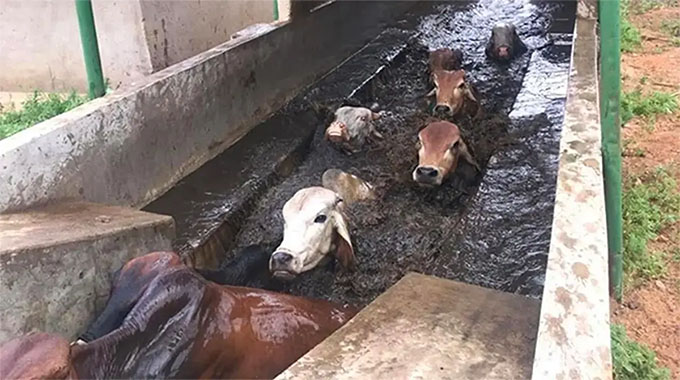Govt increases January disease vaccine production

Ashton Mutyavaviri
THE Government is targeting to produce 300 000 doses of January disease vaccine, 20 percent up from last year’s 250 000, as efforts to rebuild and protect the national herd escalate.
In an interview yesterday, the acting director in the Department of Veterinary Services (DVS), Dr Chenai Majuru said they had noticed a significant reduction in cattle deaths since the Government’s interventions.
“The biggest challenge is that many farmers are not bringing their livestock for dipping,” said Dr Majuru.
“In most areas, we have engaged traditional chiefs to deal with non-compliant farmers and make them pay a fine in the form of goats,” she added.
Farmers who did not take their cattle for dipping will be arrested, as Government seeks to contain tick borne diseases hence the need to enforce the Cattle Cleansing Regulations of 1993, which make dipping of mandatory.
With the winter season now approaching, she urged farmers to continue dipping their animals every week although cases would be low compared to the rainy season.
“During winter season, cases are very low because ticks do not favour cold temperatures. However, this does not mean that farmers must take the feet off the pedal, but maintain the current momentum in the fight to eradicate ticks. They should continue with dipping to make sure their animals are safe from the tick-borne diseases,” said Dr Majuru.
The Government declared war on tick-borne diseases after the country lost more than 500 000 cattle to diseases.
It also reviewed the Animal Health Act and its associated regulations to more effectively enforce animal movement controls for an enhanced disease control programme.
The implementation of the revised Animal Health Act and its regulations will effectively go further than just preserving the national herd, but allow for its continued expansion.
Meanwhile, in an X (formerly Twitter) post, the Ministry of Lands, Agriculture, Fisheries, Water and Rural Development has stressed that vaccine production for various cattle diseases, principally January disease, was now being accelerated to ensure self-sufficiency.
Better organisation and coordination among sectors in prioritisation of diseases and vaccine development and deployment are required, said the Ministry.
The cattle population increased from 5,4 million in 2020 to 5,6 million in 2023, with a value of US$1,68 billion.
Over 90 percent of cattle population is in the communal areas, where they have a social and cultural status.
The Government introduced the Livestock Recovery and Growth Plan (LRGP) that focuses on improving nutrition, introducing better genetics and reducing debilitating diseases, capacitation of extension services, market and trade development and investment mobilisation to increase livestock numbers and quality.








Comments